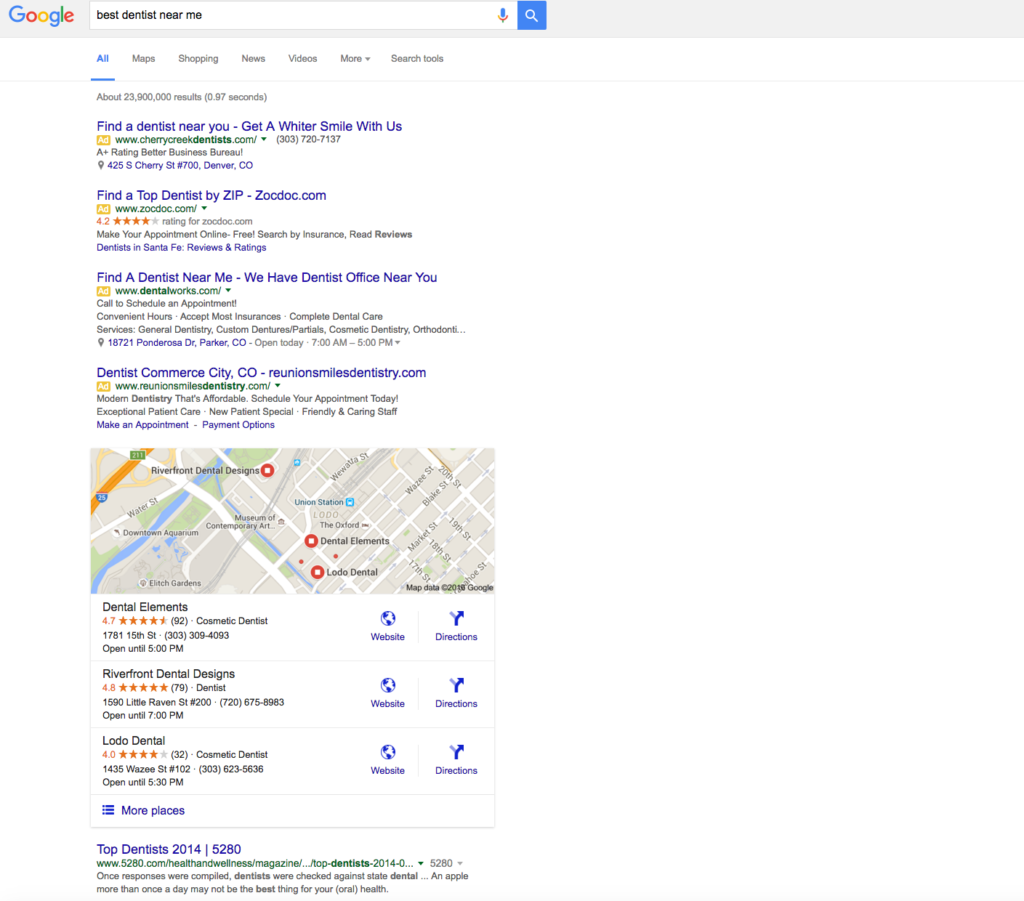The Importance of Research in Dental Marketing Content
 Marketing your dental practice can be a daunting task, especially if you don’t have the expertise in creating effective strategies. Dentists usually focus on their expertise in patient care, leaving little time for them to focus on marketing themselves. This is why it is essential to work with a professional marketing agency that can help you develop the right approach. One of the key factors in successful marketing is doing thorough research. In this blog post, we will explain the importance of research in dental marketing content.
Marketing your dental practice can be a daunting task, especially if you don’t have the expertise in creating effective strategies. Dentists usually focus on their expertise in patient care, leaving little time for them to focus on marketing themselves. This is why it is essential to work with a professional marketing agency that can help you develop the right approach. One of the key factors in successful marketing is doing thorough research. In this blog post, we will explain the importance of research in dental marketing content.
1. Understanding your target audience
Knowing your audience is crucial in creating marketing strategies. Without getting a clear picture of who your patients are, how can you create marketing materials that will appeal to them? That’s where research comes in. Through surveys or studies, you can identify the demographics of your patient base, such as age, gender, location, and interests. This information will help you tailor your message to resonate with them effectively.
2. Developing relevant content
Once you have a clear understanding of your audience, you can then develop content that resonates with them. Research will help you identify the specific issues that your patients are facing and what kind of information they’re looking for when it comes to dental care. This can help you create content that offers solutions to their concerns while building trust and credibility.
3. Competitor analysis
Research not only includes studying your own patients but also analyzing your competitors. By identifying your main competitors and understanding what they are doing differently, you can adjust your own approach to stay ahead of the competition. This research can also help you identify gaps in the market that you can take advantage of, making your practice stand out.
4. Keyword research for SEO
To promote your content online, you need to optimize it for search engines. Keyword research is an essential part of SEO that can help you determine the phrases and terms that people are using to find services like yours. By including these keywords in your content, you can improve your search engine ranking, making it easier for patients to find you online.
5. Keeping up with the latest trends
Finally, research allows you to stay on top of the latest industry trends, including new treatments, technologies, and approaches to dental care. By keeping up to date with developments in your industry, you can offer the latest treatments to your patients, positioning your practice as a leading one in the field.
In summary, research is an essential component of successful dental marketing. By understanding your target audience, developing relevant content, analyzing your competitors, performing keyword research, and staying up to date with industry trends, you can create effective marketing strategies that drive patient traffic and boost your practice’s bottom line. Therefore, it is crucial to work with a professional marketing agency that understands the importance of research and offers the necessary expertise to help your practice stand out from the competition.
ProspectaMarketing is an experienced Internet marketing firm specializing in dental practices and the tools of Internet marketing. We help you reach key prospects who are looking for what your practice has to offer. Our unique and thorough approach provides visibility, financial accountability, and ongoing refinement and improvement. You can find out more by contacting Lane Anderson toll-free at 1-877-322-4440 Ext 101, by email using the form on our Contact Us page, or online at ProspectaMarketing.com.

 At ProspectaMarketing, we specialize in providing wide-reaching, impactful digital marketing for dental practices. One of the core tenets our blogging, local listing, and SEO specialists all share is an affinity for creative solutions. This is why today, we will be covering the power of storytelling in dental marketing!
At ProspectaMarketing, we specialize in providing wide-reaching, impactful digital marketing for dental practices. One of the core tenets our blogging, local listing, and SEO specialists all share is an affinity for creative solutions. This is why today, we will be covering the power of storytelling in dental marketing! At ProspectaMarketing, we endeavor to stay on the forefront of marketing research. This way, we can provide the most up-to-date analysis and advertising tools to the practices we represent. We believe that the Internet is still young and always changing. Due to this, it takes an active, dynamic advertising strategy to really take advantage of its web of chameleon-like opportunities.
At ProspectaMarketing, we endeavor to stay on the forefront of marketing research. This way, we can provide the most up-to-date analysis and advertising tools to the practices we represent. We believe that the Internet is still young and always changing. Due to this, it takes an active, dynamic advertising strategy to really take advantage of its web of chameleon-like opportunities.
